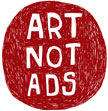Blues for Papa
 I wonder what Key West was like when Ernest Hemingway first arrived here. It must have been the same milky blue sea all around him. The Caribbean blue that is unique to this area. If they made a drink with blue curacao and milk (a blue cow?) it would look like the water here. But if he had sailed into the southwestern part of the island, the "downtown" of Key West today, he would have turned right around and headed for Cuba, I am sure.
I wonder what Key West was like when Ernest Hemingway first arrived here. It must have been the same milky blue sea all around him. The Caribbean blue that is unique to this area. If they made a drink with blue curacao and milk (a blue cow?) it would look like the water here. But if he had sailed into the southwestern part of the island, the "downtown" of Key West today, he would have turned right around and headed for Cuba, I am sure.Today's Key West is built up like just another waterfront tourist town. Same souvenir shops, theme restaurants and bars, non-descript chain hotels and condos. The streets are crowded with tourists -- in cars and scooters and electric carts, on foot, on bicycles (for the first time in 30 years?) -- and the marinas are jammed with all types of watercraft.
 It seems that there are three types of people here.
It seems that there are three types of people here.1) Those that love being above the water. Boating, fishing, sailing, jet-skiing... Some are tourists who spoil the tranquility of a lush lagoon with their diesel smoke-belching watercraft. Some are real Men of The Sea, in crafts big and small, luxurious and funky.
2) Those that love being in the water. Divers, snorkelers, swimmers...
3) The others. The ones who aren't tourists are involved in the tourist trade somehow. They could be from anywhere. In fact, you could pick them up from Key West and plonk them down in a Cannery Row shop in Monterey and they would fit right in.
Big Dog and I are terrible tourists. We hate "vacationing," preferring to "live" in a place to find out what a new locale is all about. We rile at tourist prices. K. must think we are nuts when we drive a mile away from downtown to find "free" parking instead of letting her pay $20 (!) for a parking lot. It's not about frugality, per se, so much as our traveler lifestyle. When you live on the road, you have to live within the local economy, rather than the tourist economy. After five years of wandering around, it's just the way we work.
As much as I badmouth Hemingway ("I hate the term 'male chauvinist.' Because of this term, no one understands what 'chauvinist' really means anymore and thinks it's a synonym for 'sexist' but it's the perfect term to describe him") I suppose I'm as big a romantic as he was and was secretly hoping to find something authentic and endearing about this town. It's not in any of the places advertised in tour guides, I can tell you that. A shadow of it remains in the handful of colorful old timers as well as the old houses that line the side streets -- charming wooden houses and cottages (are these conch houses?) with sloping metal roofs and shady tropical gardens -- but even these felt too touristy at times, as if they had been preserved in their loveliness for the passing visitor. There was more life in the black neighborhoods. Old men sitting on the sidewalks, watching the tourist circus go by. Neighbors shouting across the street to each other.
 "This is where I'd live if I were on Key West," I said to Big Dog. Maybe the houses weren't as cute and quaint as the historical houses, but I loved their easy, low-slung funkiness. And they were real. Much more real than the Hemingway House which we wound up bypassing. Papa would certainly understand.
"This is where I'd live if I were on Key West," I said to Big Dog. Maybe the houses weren't as cute and quaint as the historical houses, but I loved their easy, low-slung funkiness. And they were real. Much more real than the Hemingway House which we wound up bypassing. Papa would certainly understand.Labels: Florida, Key West, on-the-road



0 Comments:
Post a Comment
<< Home